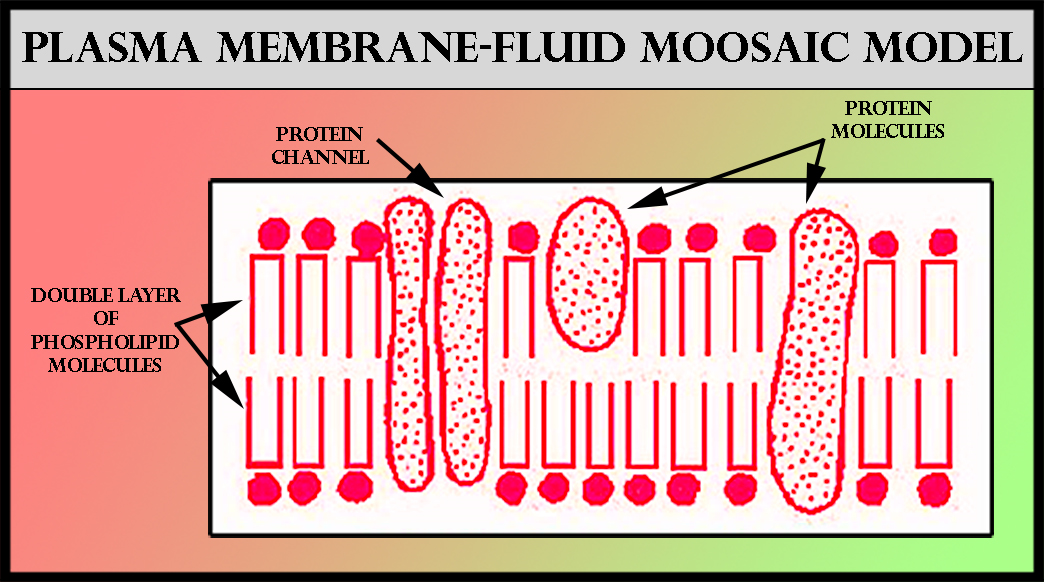
The thickness of the plasma membrane is
(a)$10-30A°$
(b)$30-50A°$
(c)$50-70A°$
(d)$70-100A°$
Answer
480.3k+ views
Hint: The plasma membrane is a selectively permeable membrane that will allow the movement of proteins and other solute molecules. The plasma membrane is a trilaminar structure (i.e., made of 3 layers) and consists of various membrane proteins.
Complete answer:
The plasma membrane consists of a lipid bilayer and its thickness will nearly be $100A°$.
The cell membrane/plasma membrane is a phospholipid bilayer where the polar head (hydrophilic )will face the exterior side and the hydrophobic tail will face the inner side, as shown in the diagram below.
The cell membrane constitutes lipids (specifically phosphoglycerides), carbohydrates, proteins. The proteins present on the membrane can either be integral (present inside the plasma membrane) or peripheral proteins (present on the surface of the plasma membrane).
The widely accepted model of the plasma membrane is ‘the fluid mosaic model’. It states that the lipids are in the quasi fluid state (quasi means ‘resembling’) and thus allows the lateral movement of the proteins between the lipid bilayers. This quasi lipid nature is also crucial for various other cell activities such as cell division, cell proliferation, intercellular junction formation, and endocytosis.
Additional Information:
The function of the plasma membrane
The plasma membrane enables the selective transport of several molecules across it and plays an important role in cell signaling.
Some molecules can move across the plasma membrane without the requirement of the energy. This type of transport is called passive transport. Whereas some molecules will have to travel against the concentration gradient (movement of molecules from the region of lower concentration to the higher concentration region). This kind of transport requires energy and hence is called active transport.
So, the correct answer is, ‘$70-100A°$’.
Note:
The lipid bilayer is non-polar and thus will not permit the polar molecules to pass the plasma membrane. These polar molecules will require carrier protein to facilitate its movement within the membrane. Neutral molecules like water move across the plasma membrane by osmosis.

Complete answer:
The plasma membrane consists of a lipid bilayer and its thickness will nearly be $100A°$.
The cell membrane/plasma membrane is a phospholipid bilayer where the polar head (hydrophilic )will face the exterior side and the hydrophobic tail will face the inner side, as shown in the diagram below.
The cell membrane constitutes lipids (specifically phosphoglycerides), carbohydrates, proteins. The proteins present on the membrane can either be integral (present inside the plasma membrane) or peripheral proteins (present on the surface of the plasma membrane).
The widely accepted model of the plasma membrane is ‘the fluid mosaic model’. It states that the lipids are in the quasi fluid state (quasi means ‘resembling’) and thus allows the lateral movement of the proteins between the lipid bilayers. This quasi lipid nature is also crucial for various other cell activities such as cell division, cell proliferation, intercellular junction formation, and endocytosis.
Additional Information:
The function of the plasma membrane
The plasma membrane enables the selective transport of several molecules across it and plays an important role in cell signaling.
Some molecules can move across the plasma membrane without the requirement of the energy. This type of transport is called passive transport. Whereas some molecules will have to travel against the concentration gradient (movement of molecules from the region of lower concentration to the higher concentration region). This kind of transport requires energy and hence is called active transport.
So, the correct answer is, ‘$70-100A°$’.
Note:
The lipid bilayer is non-polar and thus will not permit the polar molecules to pass the plasma membrane. These polar molecules will require carrier protein to facilitate its movement within the membrane. Neutral molecules like water move across the plasma membrane by osmosis.

Recently Updated Pages
Glucose when reduced with HI and red Phosphorus gives class 11 chemistry CBSE

The highest possible oxidation states of Uranium and class 11 chemistry CBSE

Find the value of x if the mode of the following data class 11 maths CBSE

Which of the following can be used in the Friedel Crafts class 11 chemistry CBSE

A sphere of mass 40 kg is attracted by a second sphere class 11 physics CBSE

Statement I Reactivity of aluminium decreases when class 11 chemistry CBSE

Trending doubts
10 examples of friction in our daily life

The correct order of melting point of 14th group elements class 11 chemistry CBSE

Difference Between Prokaryotic Cells and Eukaryotic Cells

One Metric ton is equal to kg A 10000 B 1000 C 100 class 11 physics CBSE

State and prove Bernoullis theorem class 11 physics CBSE

What organs are located on the left side of your body class 11 biology CBSE




